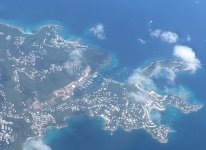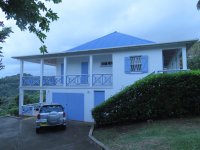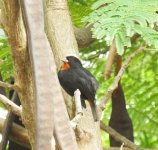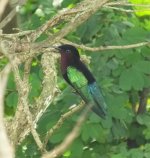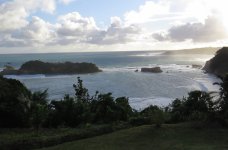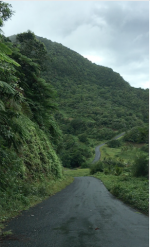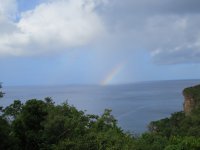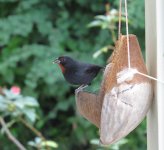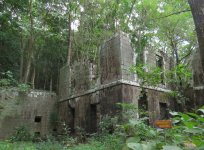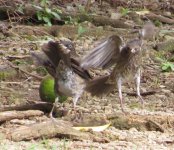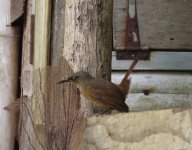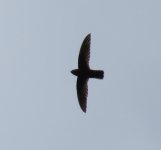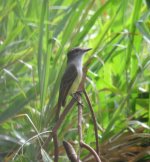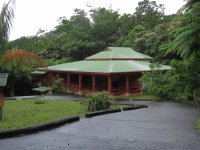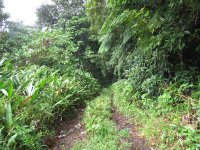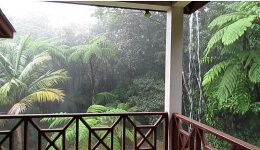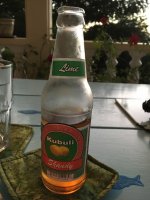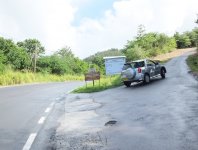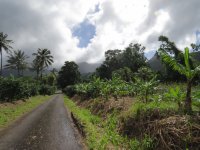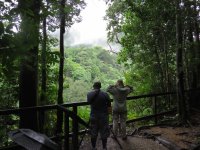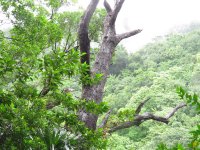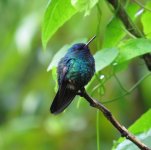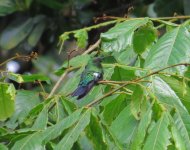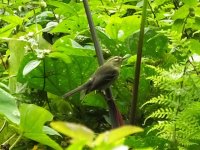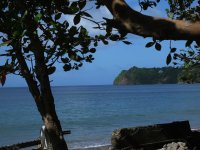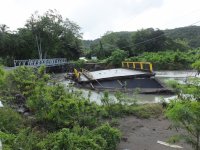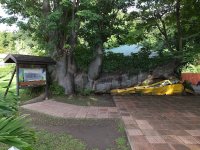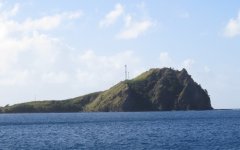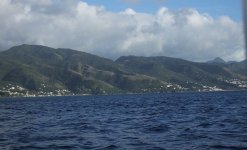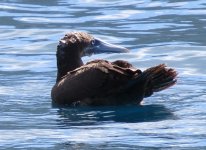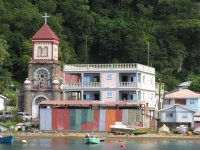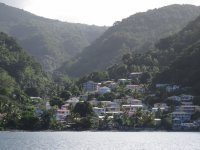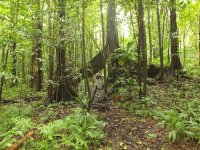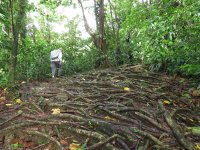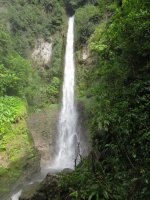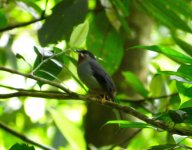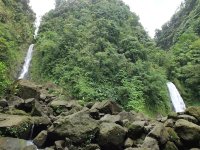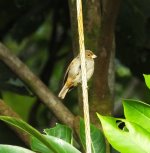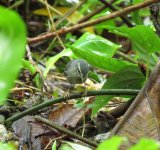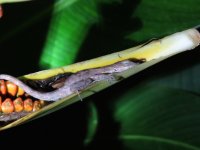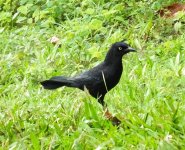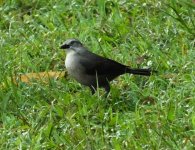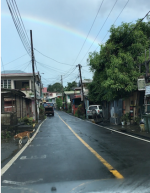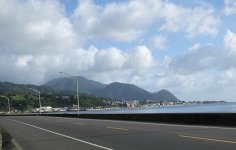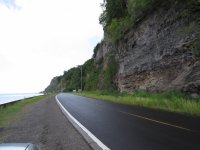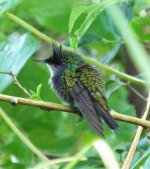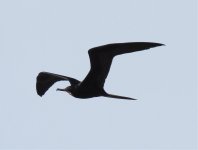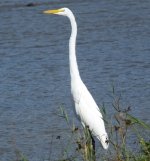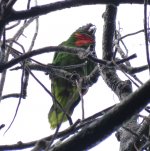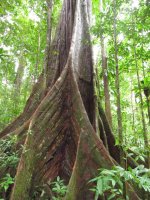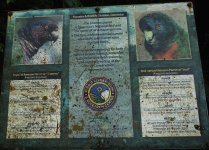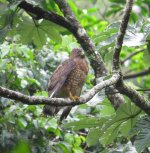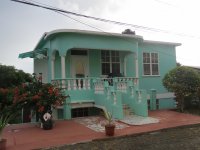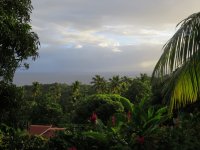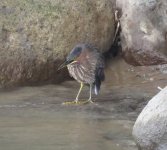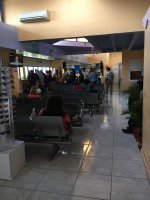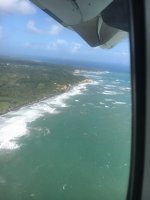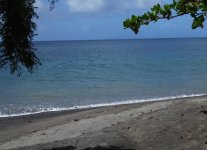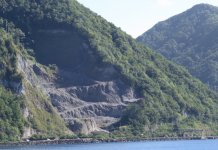Hamhed
Well-known member
Dec 21 This day ended our week long visit to Puerto Rico,
(http://www.birdforum.net/showthread.php?t=346566). Yet another Caribbean island was still on our holiday agenda, the seldom visited country of Dominica.
Sad stories from travelers booking with LIAT are easily found on the internet so we boarded a flight from San Juan, Puerto Rico, at 1:30 that afternoon with some trepidation. We hoped for the minimum: safe passage with luggage intact. Leaving an hour late, the plane made the short flight to Antigua intact before losing another 30 minutes on that runway, arriving in Dominica at 6pm, just after dark. Viewing the spectacle of the numerous tropical islands through the plane window made me forget online reports of the Dominica airport not having runway lights. Later, we were told that was true before Tropical Storm Erica hit the island in August of 2015. The airport was rebuilt, adding the necessary lights to make our 6 pm landing possible.
As imagined in this size airport, we quickly moved through baggage, immigrations, customs and walked a very short distance to an adjacent building where the rental car agencies were housed. Back in the US, we bought a cell phone plan that would allow us to call Valley Rental on our cell phones to work out the details of the week to come. Once in Dominica though, we opted to rent a phone from them. Filling out paperwork, paying for temporary driver’s licenses and earning how to use the new phone kept us at the agency until 7:30. We drove off with the LIAT experience behind us but it was too early to feel relieved. Obviously, it was dark. Very dark because it was also raining. We jogged around a bit of airport construction, connecting with the narrow road to Calibishie, with Liz and I both chanting “Stay left, stay left”! But not too far left. The good folks at Valley Rentals had warned us of the tire-eating, concrete drainage system used in many areas of the island. At times, the margin for error on these narrow roads was very small. This site might further explain the island’s driving conditions: http:www.dominicaliving.com/life-driving.htm.
Nevertheless, we survived LIAT and the 25 minute drive, relieved and almost cheering when we saw the sign for Caribbean Blue, our Airbnb stay for the night. We met our host, showered, ate granola bars for supper and slept well to sound of the light surf in nearby Hodges Bay.
(http://www.birdforum.net/showthread.php?t=346566). Yet another Caribbean island was still on our holiday agenda, the seldom visited country of Dominica.
Sad stories from travelers booking with LIAT are easily found on the internet so we boarded a flight from San Juan, Puerto Rico, at 1:30 that afternoon with some trepidation. We hoped for the minimum: safe passage with luggage intact. Leaving an hour late, the plane made the short flight to Antigua intact before losing another 30 minutes on that runway, arriving in Dominica at 6pm, just after dark. Viewing the spectacle of the numerous tropical islands through the plane window made me forget online reports of the Dominica airport not having runway lights. Later, we were told that was true before Tropical Storm Erica hit the island in August of 2015. The airport was rebuilt, adding the necessary lights to make our 6 pm landing possible.
As imagined in this size airport, we quickly moved through baggage, immigrations, customs and walked a very short distance to an adjacent building where the rental car agencies were housed. Back in the US, we bought a cell phone plan that would allow us to call Valley Rental on our cell phones to work out the details of the week to come. Once in Dominica though, we opted to rent a phone from them. Filling out paperwork, paying for temporary driver’s licenses and earning how to use the new phone kept us at the agency until 7:30. We drove off with the LIAT experience behind us but it was too early to feel relieved. Obviously, it was dark. Very dark because it was also raining. We jogged around a bit of airport construction, connecting with the narrow road to Calibishie, with Liz and I both chanting “Stay left, stay left”! But not too far left. The good folks at Valley Rentals had warned us of the tire-eating, concrete drainage system used in many areas of the island. At times, the margin for error on these narrow roads was very small. This site might further explain the island’s driving conditions: http:www.dominicaliving.com/life-driving.htm.
Nevertheless, we survived LIAT and the 25 minute drive, relieved and almost cheering when we saw the sign for Caribbean Blue, our Airbnb stay for the night. We met our host, showered, ate granola bars for supper and slept well to sound of the light surf in nearby Hodges Bay.




